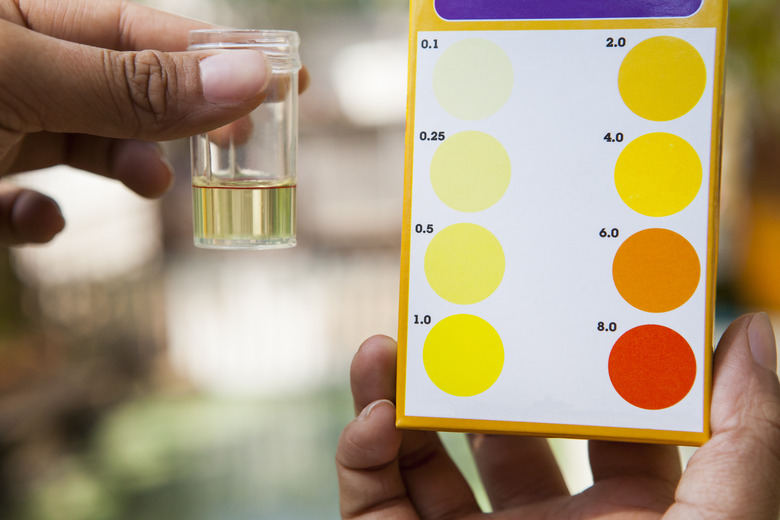What pH Numbers Are Considered Acidic, Base & Neutral?
Whether using a pH kit to ensure that pool water is comfortable for swimming, evaluating soil pH to grow a garden or contemplating how a stomachache medication neutralizes digestive acid, the concept of pH is easy to see in the real world, even if the underlying chemistry is a bit more advanced.
TL;DR (Too Long; Didn't Read)
The pH scale runs from 0 to 14, where 7 is neutral. Any substance with a pH value below 7 is considered acidic while any substance with a pH value above 7 is considered basic or alkaline.
The pH Scale
The pH Scale
The pH scale is not a new scientific concept. In fact, it was introduced in 1909 by Soren Peter Lauritz Sorensen. As a biochemist, Sorensen invented the pH scale to visualize how acidic or alkaline (basic) a substance is on a scale of 0 to 14. While 7 is considered pH neutral, any value below 7 is acidic, and any value above 7 is basic.
The pH scale is logarithmic, which means that the values exist in equal ratio to each other. This means that as you move up the scale from 14 to 0, each value is ten times more acidic than the value below it. For instance, if a substance has a pH of 6, that substance is ten times more acidic than a substance with a neutral pH of 7. As you go down the scale, each value is ten times more basic than the value above it, so a substance with a pH of 8 is ten times more basic than the neutral substance.
Examples of Acids and Bases
Examples of Acids and Bases
Sometimes it is helpful to visualize the pH scale using common household substances. Pure water has a neutral pH of 7. Some easy-to-find acids include vinegar, lemon juice, orange juice, coffee and soda. Readily available basic substances include bleach, soapy water and milk of magnesia. Even human blood has a measurable pH value, which is usually between 7.35 and 7.45. If the pH of human blood falls below 6.8 or rises above 7.8, the result is fatal.
A Bit Less Basic
A Bit Less Basic
While it's fairly straightforward to understand how to use the pH scale to measure whether a substance is neutral, acidic or alkaline, the chemistry behind pH is a bit more complex. The term "pH" stands for "potential of hydrogen" because pH is really a measure of charged particles called ions. Any time you have water (H2O), a few of the molecules of water will break apart. This leaves some negatively charged hydroxide ions (OH_) and some positively charged hydrogen ions (H+) in the solution.
In pure water, these ions are equal in number and therefore completely balanced, resulting in a neutral pH. An acid by definition donates hydrogen ions. This means that when an acid is dissolved in water, the balance between hydroxide ions and hydrogen ions tips. Acidic solutions always have a greater number of hydrogen ions. The opposite is true for basic substances, which accept hydrogen ions. When a basic substance is dissolved in water, the solution has a greater number of hydroxide ions.
Of course, the essentials of understanding pH are simpler and lend themselves to real world applications. From maintaining a pool to preparing soil for a garden to treating a stomachache, a basic understanding of pH is a valuable tool.
Cite This Article
MLA
Mayer, Melissa. "What pH Numbers Are Considered Acidic, Base & Neutral?" sciencing.com, https://www.sciencing.com/ph-numbers-considered-acidic-base-neutral-8614/. 30 April 2018.
APA
Mayer, Melissa. (2018, April 30). What pH Numbers Are Considered Acidic, Base & Neutral?. sciencing.com. Retrieved from https://www.sciencing.com/ph-numbers-considered-acidic-base-neutral-8614/
Chicago
Mayer, Melissa. What pH Numbers Are Considered Acidic, Base & Neutral? last modified March 24, 2022. https://www.sciencing.com/ph-numbers-considered-acidic-base-neutral-8614/
